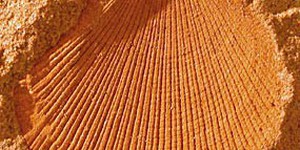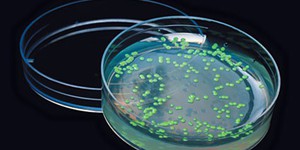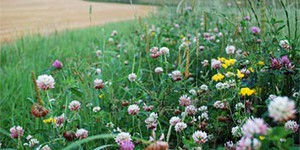Others Like “Get Some Practice at 'Fossil' Reconstruction with Owl Pellets” (top 20 results)
|
Do you like skeletons? One of the more interesting jobs at a natural history museum is the creation and care of the skeletons and bones. How do the curators clean and put together the skeletons? Many curators use the carrion beetle, Dermestes vulpinus, to quickly clean off the dead animal tissue from a corpse to reveal the skeleton. These insects do such a good job that sometimes the skeleton remains intact! Another method is to slow cook the carcass until the meat falls off. You can use…
Read more
Have you ever stood close to a fossilized T. rex skull and counted its razor-sharp teeth? Or, have you seen a fossilized stegosaurus skeleton and thought about how it defended itself with tail spikes and armored plates? A trip to a natural history museum lets you imagine what dinosaurs looked like and wonder what life with them on Earth was like. Fossils give us information about animals and plants that lived long ago. Certain places around the world contain more fossils than others. Why?…
Read more
Planning on getting a new puppy soon? Why not use some of your play time with puppy to study growth rates and puppy development? You can easily chart a young puppy's weekly weight and growth over several months to compare how quickly body dimensions and bone lengths change. While this project may take some time, it's well worth the effort. You might be amazed at the dramatic growth of your "canine kid," and what other project combines science with as much fun, or a more adorable subject?
Read more
This project shows you how to build a simple model system to simulate underground water flow. Underground water flow is important for understanding replenishment of underground aquifers, migration of underground contaminant plumes, and cave formation. With your model system, you can simulate various underground conditions, and test your predictions about the effects they have on water flow.
Read more
Flower development is an important part of plant growth. When a plant has reached maturity, it needs to develop flowers in order to reproduce. The male and female parts of the flower have specialized structures for reproduction that develop as the plant matures. How do flowers develop over time? Which structures develop first? You can answer these questions by dissecting the flowers of a gladiola. Gladiola flowers grow and develop along the stem, with the most mature flowers opening at the…
Read more
What is expression cloning and how is it used in the biotechnology industry? How are plasmids constructed for use in a bacterial expression system? You can investigate these questions and more using bacterial expression kits meant for high school classes. You will need a laboratory space equipped to grow bacteria and carry out simple molecular biology. A kit with plasmids and bacterial cells to transform are also needed. Here are two possibilities:
BioBuilder What a Colorful World Kit …
Read more
In the wild there are two types of animals: the hunters and the hunted. A good predator is always on the prowl for fresh prey. What can an animal do to stay off of the menu? Some animals have evolved to use a variety of camouflage tactics so they can fool their predators and increase their chances of survival. In this science project, you will be the hungry predator hunting for M&M® prey. But it may not be as easy as it sounds — some of your prey will be camouflaged. Will they be…
Read more
Survey your area to find out which species of plants and animals live there. You might be surprised to find out that something you grew up thinking was very common, is actually quite unique! For example, if you live in the great plains, then you may think that prairie dogs are a nuisance or a pest. Actually, some species of prairie dogs are only found here, and have a very important role for short and tall grass prairie ecosystems. The prairie dogs are an important part of the food-chain, and…
Read more
Sleeping in class isn't allowed... unless you're a computer! In fact, the Environmental Protection Agency (EPA) suggests that putting your school's computers to sleep when they're not in use might reduce a school's energy bill significantly. In a study done at the North Thurston public schools in Olympia, Washington, EPA officials worked with the district to cut computer energy and costs by approximately $45,000 annually! How? By implementing a variety of power-management strategies for the…
Read more
Ladybugs are common insects in North American gardens that prey upon aphids, making them all the rage in biological pest control. Ladybugs can be bred in captivity making them a good insect to study. Just chop off an aphid infested plant stem for food, make a water soaked cotton ball for water, and add to a small plastic container with a lid to make a breeding box. You can use ladybugs collected from the wild, or buy ladybugs from your local nursery. The most common species is the 12-spotted…
Read more
|
Explore Our Science Videos
Design a Seeding Machine
How to Make Magnetic Slime
Make a Thermometer - STEM Activity










